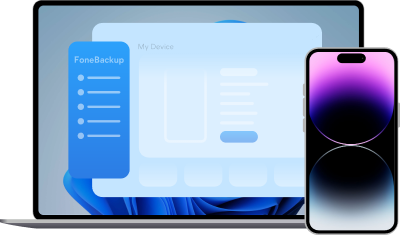How to Fix iCloud Backup Failed on iPhone (All Models Include)
How to fix iCloud backup failed on iPhone? This passage explains why the notification says iCloud backup failed and gives 7 solutions to solve the problem.
iCloud backup failed on my iPhone
{My new iPhone has just arrived, so I plan to transfer data from my old iPhone. I choose iCloud but it doesn’t work well. In fact, the notification says iCloud backup failed. I need the data from my old iPhone, so anybody could get me out of this?
- Question from Apple User
Backing up old iPhone is very important. At present, thousands of people lose their data without backup, so they just disappear forever. iCloud is a good tool to backup iPhone because it’s convenient and provides 5GB of free storage. Besides, If you got the newest iPhone, having an iCloud backup allows you to quickly transfer data from the old iPhone to the new iPhone.
However, lots of people receive a note saying "iPhone Backup Failed" on the iPhone. And it may come with the message that you do not have enough space in iCloud to back up this iPhone or other prompts. This issue can result from many causes, like
• iCloud storage is full: iCloud initially only has 5GB free space. If the data that needed to be backed up is larger than the free space, you need to buy more iCloud plans.
• iOS is out-of-date: Sometimes, if your iOS version is too old, the iCloud can't perform well.
• Incorrect system settings: Because of unknown settings, your iCloud feature can't backup iPhone successfully.
How to fix "iCloud backup failed on iPhone"
If you have the same problem, just follow the content below, we provide 7 solutions to help you solve this problem.
Solution 1: Check your available iCloud storage on iPhone
The commonest reason why the user’s iCloud backup failed is insufficient iCloud storage. Every iCloud ID has 5GB of free storage, so if you and your family are using the same Apple ID, space might be not enough to save the copies of too many devices. You should check the available iCloud storage left for your iPhone
Step 1. Go to iPhone Settings > [your name] > iCloud on iPhone to see whether there is enough space for your iCloud backup. You’d better leave 1GB for that.
Step 2. Tap Manage storage in iCloud settings, you could check which data has been saved to iCloud. There might be photos, messages, contacts, or backups of other devices. You could delete the unnecessary data to release storage.
Step 3. Tap Backups in Manage Storage and you could see the backups of all the devices. Tap the device you are using, and then you could see the estimated size of the next iCloud backup of your iPhone. App data would occupy the most storage of iCloud backup. You would find that they have been listed below and the size of each one has been shown. You could uncheck the app to reduce the iCloud backup content of your iPhone.
Solution 2: Make sure your iPhone is up to date
Although iPhone could not be updated to a new iOS, you should still update it to the latest version. Errors in the old operating system could be repaired in the next update.
Step 1. You should go to iPhone Settings > General > Software Update to check whether there is an available update.
Step 2. If there is, tap Download and install. Wait for a few minutes to let it complete the downloading. After that, tap Install.
Tips: If the network conditions on your iPhone are not stable, you could connect iPhone to iTunes with a USB cable and follow the pop-ups to finish updating.
Solution 3: Sign out of iCloud on iPhone
If anything about iCloud settings goes wrong, you could sign out of iCloud on your iPhone and then sign in again. Of course, there are some risks if you use this method. Although iPhone would ask you whether to leave a copy of certain data on iPhone when you sign out of iCloud, we are not sure which data could be saved.
After you sign in your Apple ID again, most data could be retrieved. You’d better save your important data with other tools, like iTunes and AOMEI FoneBackup, before you perform an action.
Just go to iPhone Settings > [your name], scroll down to the bottom, and tap Sign Out. After that, sign in again and then try backing up iPhone to iCloud.
Solution 4: Repair system glitches on iPhone
Except for signing out of iCloud, you could also have safer ways to repair system glitches.
★ Restarting iPhone is the simplest way to fix the iCloud backup issues and this method could also be applied to solve any other IT issues.
★ iCloud backup relies on the stable Internet so you should make sure iPhone is ready for sending and receiving bytes. Go to iPhone Settings > General > select Reset Network Settings or Reset All Settings. This could let iPhone forget all the Wi-Fi passwords, you should remember the passwords so you could reconnect iPhone to the Internet.
Solution 5: Make sure the network conditions are good and secure
iCloud backup requires a fast and steady network. If your iCloud backup failed for poor network conditions, iCloud would stop uploading data from time to time, and then your iCloud backup failed on your iPhone. You could connect iPhone to a faster Wi-Fi and try again.
In addition, if you connect iPhone to insecure Wi-Fi, like public Wi-Fi, iPhone might fail to send data because it wants to protect your privacy. You’d better use a private Wi-Fi to backup iPhone to iCloud.
Solution 6: Seek help from Apple
Apple is always improving its service. If they need to shut down the service, they would let you know it. Go to System Status to check whether iCloud Backup is available.
If Apple reports no issue about iCloud backup, you should scroll down the page to the bottom can click contact support.
Solution 7: Backup iPhone to computer
If iCloud backup still fails on your iPhone or you receive other error messages like your iphone cannot be backed up notification won't go away, you should use iCloud alternative to save data. AOMEI FoneBackup is highly recommended to you.
-
What AOMEI FoneBackup could do for you:
-
Backup photos, videos, music, contacts, and messages from iPhone to computer
-
Preview and select files when backing up or restoring
-
Restore data to other Apple devices including iPhone, iPad, and iPod Touch
-
Support iPhone from iPhone 4s/5/5s/6/6s/6 plus/6s plus to latest one, etc
-
Support the latest iOS.
Step 1. Download AOMEI FoneBackup. Connect iPhone to computer with USB cable and tap “Trust” on it.
Step 2. Click Phone Backup and go to Selective Backup. Click an icon to preview and select data in the folders. After that, click OK to return.
Step 3. Select a path to store your backup > Click Start Backup on the home screen and wait for that task to complete.
Conclusion
When iCloud backup failed on iPhone 6 or later iPhone, there could be caused by internal reasons or external reasons. You should check iCloud storage, update iPhone or reset iPhone settings to let iPhone is ready for iCloud backup. A fast and secure Wi-Fi should be connected to make iPhone successfully upload data to iCloud.

